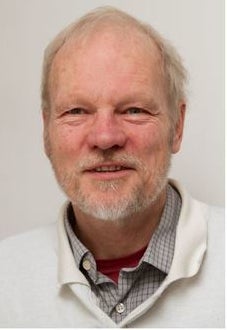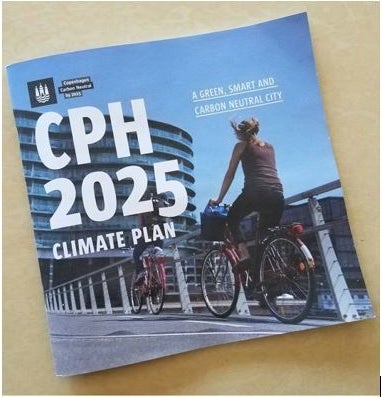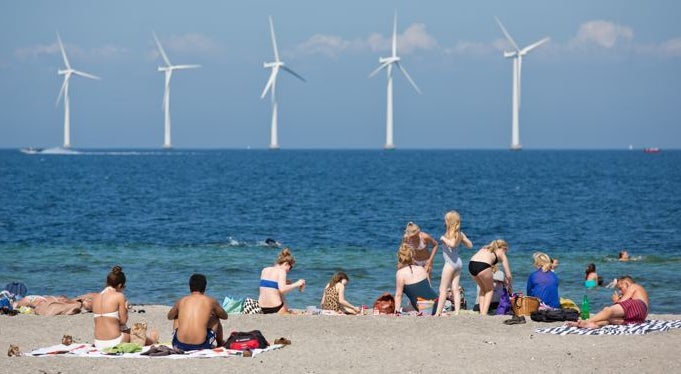Copenhagen, Denmark—What factors have led to Copenhagen’s global preeminence as a leader in urban climate protection and clean energy development?

City of Copenhagen, Denmark.
Søren Dyck-Madsen, an engineer with the Danish Ecological Council in Copenhagen believes he knows why the city has been so successful, as attested by its many coveted environmental awards, including the Green Cities Award. (See “Copenhagen, Striving to be Carbon-Neutral: Part 1, The Economic Payoffs.”)
Poised for Success
Dyck-Madsen thinks that Copenhagen’s strong commitment to climate protection is due to Denmark’s history of political stability, a tradition of public integrity, a lack of corruption, and an atmosphere of civic trust among citizens and government. Denmark is also a small nation, and Copenhagen has a relatively homogeneous population.
In contrast to the United States, where mistrust of government is high and political differences have widened in recent years, stoked by politicians, in Denmark people seem less mistrustful of government and more inclined toward civic cooperation and compromise.
Civic engagement is high in Denmark, where 86 percent of the eligible population voted in the last national election. By contrast, in the U.S., only 58 percent of eligible voters voted in the 2016 Presidential election.
National support for education is strong in Denmark: all students enjoy free tuition and college students also receive a $1,000 a month stipend. Ninety percent of them pursue a combined bachelor’s and master’s degree. Seventy-two percent of people between 15‒69 years in Copenhagen have a college degree or above.
A Constellation of Factors
Outsourcing Emissions. Much of Copenhagen’s heavy industrial production needs are met through trade with other nations. Little domestic industrial production and manufacturing occurs in the city, except in its port.

Søren Dyck-Madsen of the Danish Ecological Council
“We can have a cleaner information economy, because somebody else is producing a lot of the consumer goods,” Dyck-Madsen said. As a result, pollution that would otherwise be generated in Copenhagen isn’t officially added to the city’s carbon footprint.
Energy Providers. In contrast to many American cities where energy is a profitable business for fuel-service providers and utilities, nonprofit corporations in Copenhagen are in charge of energy generation, district heating, district cooling, and waste-to-energy conversion.
Foresight and Integrated Planning. The city has a strong tradition of engaging in thoughtful, systematic, long-term planning. In keeping with this approach, the city’s energy systems are managed as an integrated, coherent whole, rather than as a collection of unrelated heating, cooling, ventilating, and mobility systems.
The city and utility planners carefully analyze and plan for each aspect of the city’s energy system using a systems planning approach. Copenhagen can therefore exploit opportunities for energy efficiency by integrating different elements of its energy system and managing them as a coherent system. The city also has a long tradition of receptivity to energy-efficiency legislation.

A summary of the Copenhagen 2025 Climate Plan published by the municipality.
Early Buy-In. With respect to the city’s ambitious climate plan to become carbon-neutral by 2025, all stakeholders were involved at an early stage. That promoted the development of a common vision based on desired community economic and quality-of-life benefits, rather than on goals narrowly defined in terms of quantitative CO2 reductions.
The city’s climate plan is strengthened and energized, Dyck-Madsen said, by the existence of the city’s carbon-neutrality target. That framework goal has made it a lot easier for Copenhagen officials to muster adequate political support for otherwise controversial decisions.
The Energy Transition Begins
The energy crises of 1973 and 1979 hit Denmark very hard, Saudi Arabia shut down all its oil exports to Denmark, prompting Denmark to review its energy situation. “We had a lot of trouble, but we made a very good use of that situation,” Dyck-Madsen recalls.
Following that 1979 crisis, Denmark adopted an energy content tax combined with an energy-efficiency subsidy program. As a result, energy use for residential heating and hot water energy use fell by 25 percent in just the next four years.
Denmark’s energy planners also assessed the nation’s energy supply and demand options and created a 40-year energy plan. It identified the best locales for district heating and for natural gas heating. It also guided the nation in an economically strategic, i.e., expedient but environmentally problematic, move from oil to coal.
Each community was obliged to make a district heating plan , and heat from Denmark’s energy-efficient power plants was connected to those district heating systems. Subsequently, energy-efficient district heating was widely introduced and expanded, so it now serves 60 percent of all Danish buildings and virtually 100 percent of Copenhagen.
The new and carefully planned national energy system was flexible enough to easily integrate large amounts of wind power, which has gradually enabled the country to begin closing its coal power plants.
Some Danish power plants have been sold at deep discounts to heating companies to provide district heat, since operating these plants for power is no longer profitable. As part of the city’s 2025 Copenhagen Climate Plan, these plants have been converted from coal to 100 percent wood biomass. None of Greater Copenhagen’s power plants uses coal anymore.
Since 2008, 35 percent of all Danish combined heat and power plants involved in the district heating system network have been taken out of service. Their power is no longer needed because wind power is now plentiful and cost-competitive.
The heat those thermal plants once provided is now being furnished by other power plants that are primarily used for heat production. They nonetheless occasionally provide power to meet peak demand when power prices spike.
These plants now represent reserve capacity for the power system. Payments by customers of the heating district system, in effect, thereby help subsidize the stability of the power grid.
Strict building energy-efficiency requirements were first adopted in 1962 in Copenhagen. Because they reduced Danish energy use in buildings—and therefore Danes didn’t have to spend a lot for heating or power—instituting an energy tax was relatively easy, especially when Danish energy prices again fell following the energy crisis in 1973 and 1979.
After a carbon tax was introduced in Denmark in 1993, companies were given a chance “to save up to 97 percent of the carbon tax if they entered into a voluntary energy-efficiency agreement with the Danish Energy Authority. That was one of the most effective ways of actually improving energy efficiency,” Dyck-Madsen recalled. The carbon tax served as a stick; the possibility of avoiding the tax was the carrot.
Political Stability. Because Denmark has many political parties rather than just two main parties as in the U.S., getting just two percent of the vote is sufficient to elect a member of the Danish Parliament. Therefore, coalition (and minority) governments are virtually always necessary. Thus Dyck-Madsen explained, Denmark is consistently influenced by, and governed from, the stable center of its political spectrum.
“We typically do not have a situation in which one side wins and implements a profound change, only to be overturned by the other side in the next election. For many years, nothing actually was overturned, especially in energy policy when the change came from the majority on one side or the other side, because there was stability in the middle.”

Offshore wind turbines in the near-shore area off the Copenhagen coast
Wind Power
Copenhagen and Denmark today are reaping the rewards of their far-sighted investments in wind-power, district heating, resource recovery, and biomass technologies. Denmark is now not only increasing its wind technology exports, but is also increasing its exports of other green technologies, such as water purification, district heating, and energy-efficiency equipment.
Moreover, Dyck-Madsen points out, “Wind turbine exports are increasingly accompanied by exports of technological know-how regarding how to integrate and finance it.” That can provide additional business activity and profits.
Wind power affords still more benefits in terms of energy system flexibility now and in the future. Already today, in areas outside the district heating network, wind power operates heat pumps that substitute for natural gas or oil heating.
Denmark has developed so much wind power that, from time to time, it actually has to come up with ways to cope with a surplus. Denmark’s connections to its neighbors help in this regard. For example, Denmark exports surplus wind electricity to Norway, which uses a lot of hydropower and has pumped storage facilities, so the extra power can be stored for later use.
Denmark’s power grid is “100 percent open” according to Dyck-Madsen. “We can actually export or import 100 percent of our needs for electricity from our neighbors, which is unique in the world. . . .”
Denmark is also planning a transmission line to the UK. “East-west [grids are] much better than north-south because wind fronts come in east-west . . . . The wind front will hit the UK first and then their wind turbines will help, and then the wind will leave the UK and go to Denmark. Our wind turbines can then generate power for export to the UK,” Dyck-Madsen said.
Advanced Energy Technology Options
Because of Denmark’s substantial investments in wind power, the country is studying the possible use of surplus wind power to hydrolyze water to generate hydrogen to combine with collected CO2 for the production of methane, the primary component of natural gas.
Storing electricity is often expensive, but storing gas or heat is not. Therefore the idea of storing energy in Denmark’s copious natural gas storage system has intrigued some experts. If the captured CO2 for methane synthesis came from the combustion of biomass, the process could then also conceptually be carbon-neutral.
Surplus wind power could also be used to heat large quantities of hot water for district heating—supplementing heat produced in summer by solar power plants and stored for winter use.
Smaller amounts of energy could be stored in flywheels, and batteries charged with wind power could be used to reduce peak load power demand, a process known as “peak shaving.”
How much of Copenhagen and Denmark’s clean energy solutions can be implemented in other cities and nations?
Clearly some aspects of Copenhagen and Denmark’s history and culture make them especially hospitable to renewable energy and to a wide range of efforts to reduce societal carbon emissions.
While not all elements of Copenhagen’s clean energy and climate plan can therefore be readily emulated in every city on Earth, individual features of the plan certainly can be adopted elsewhere. That includes Copenhagen’s emphasis on wind turbines, district heating, bicycle transportation, high-quality public transit, and its dedication to careful, long-term energy planning.
_____________________________________
John J. Berger, PhD. (www.johnjberger.com) is an energy and environmental policy specialist who has produced ten books on climate, energy, and natural resource topics. He is the author of Climate Peril: The Intelligent Reader’s Guide to the Climate Crisis, and Climate Myths: The Campaign Against Climate Science, and is at work on a new book about climate solutions.
Follow John J. Berger on Twitter: www.twitter.com/johnjberger
